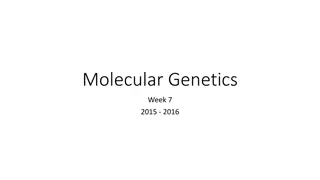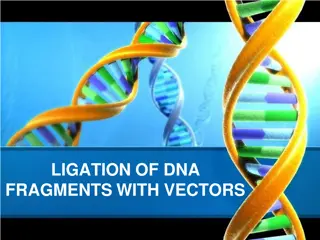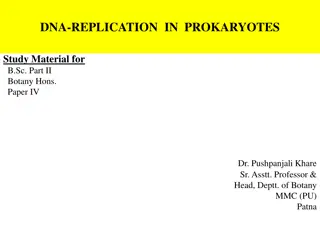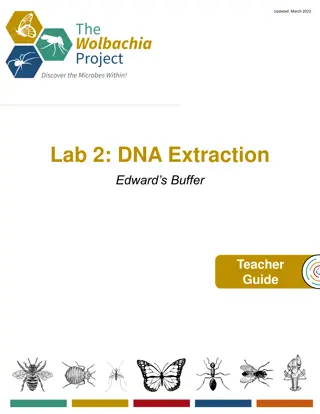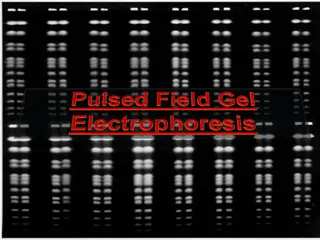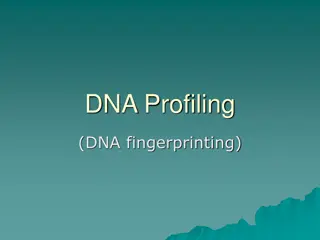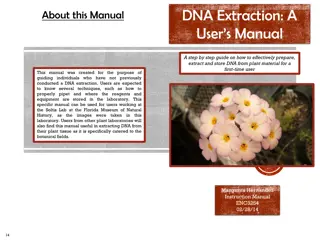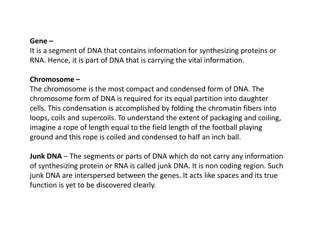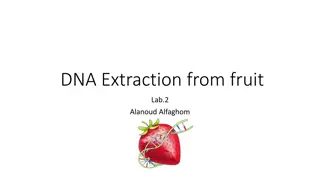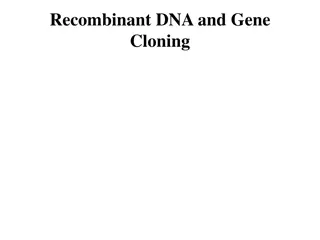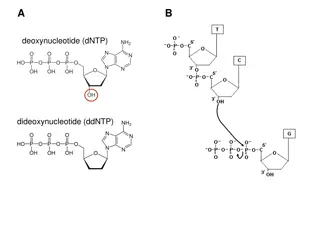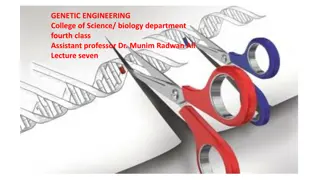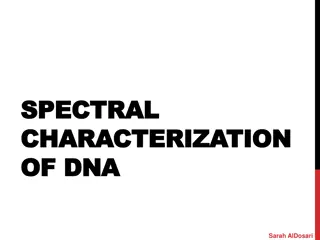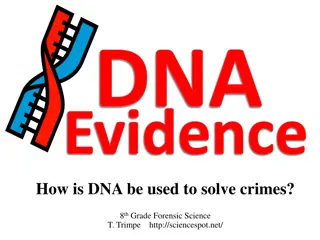
Exploring John Tate's Status in Eduqas Drama GCSE: Act 1, Scene 3
Dive into the character of John Tate, a leader driven by fear in Act 1, Scene 3 of Eduqas Drama GCSE. Uncover his insecurities, patronizing behavior, and use of fear to control others, as students explore different ways to show status through movement, speech, posture, and more in a practical exploration exercise.
Download Presentation

Please find below an Image/Link to download the presentation.
The content on the website is provided AS IS for your information and personal use only. It may not be sold, licensed, or shared on other websites without obtaining consent from the author. If you encounter any issues during the download, it is possible that the publisher has removed the file from their server.
You are allowed to download the files provided on this website for personal or commercial use, subject to the condition that they are used lawfully. All files are the property of their respective owners.
The content on the website is provided AS IS for your information and personal use only. It may not be sold, licensed, or shared on other websites without obtaining consent from the author.
E N D
Presentation Transcript
DNA Characters and Actors Eduqas Drama GCSE 9-1
INFO John Tate only appears in Act 1 Scene 3. He leads through using fear to control others. However, he is visibly falling apart during Act 1 Scene 3 as he panics and is unable to control those around him or the situation. He tries to ban the word, dead, he says he will bite their face. Or something. if anyone uses the word again. However, the use of Or something shows he has clearly not in control of his thoughts, words or the situation. The challenge to his leadership by Richard causes him further insecurity and the only way he knows how to lead is through fear, which he employs by threatening Lou, Danny and Richard. His words are very patronising as he talks down to each character John Tate to Danny: "you re on you re own side, which is, well, to be honest, very silly and dangerous John Tate to Brian: "you crying piece of filth"
TASK In a group, perform a section from Act 1, Scene 3 that shows John Tate s status. You should practice it at least 3 times through experimenting with different ways to show status (see next slide). You will need to answer questions on your practical exploration towards the end of the lesson so you should take it in turns being JOHN TATE and in exploring the ways status can be shown.
STATUS Movement - High Status: Focused, quiet, graceful, confident, firm, directed; head moves only slightly. Low Status: Unsure, nervous, jerky, stiff, tight, awkward Speech - High Status: "normal" voice pitch. But also: yelling/whispering as appropriate to the situation. Low Status: Quiet, mumbling, faltering, fast. Pitch of voice - High Status: typically deep, relaxed. Low Status: typically high, squeaking, forced Posture - High Status: Upright, straight But also: free, unforced, loose. Low Status: Bent, slack But also: knotted, stiff Breathing - High Status: Calm and regular. Low Status: Hectic, shallow, fast, panting, faltering Touching Others - High Status: Every kind of unasked-for touch: laying a hand on a shoulder, picking lint from a sweatshirt, stroking a cheek... Low Status: Shy away from touching others. Acquiesce to unwanted contact. Interacting With One's Body - High Status: Don't touch. But also: ostentatious self-contact. Low Status: Awkward or embarrassed gestures: run your fingers through your hair, rub your face. Looking At Others - High Status: Look directly, with a duration appropriate to the social situation - not too long, not too short. But also: dominant staredown, hypnotic gaze. Low Status: Rapidly avert your eyes, and avoid long eye contact. Unsteady gaze. But also: admiring, naive, or socially inappropriate stare. Social Adequacy - High Status: Always finds the correct words and gestures. Knows what is appropriate to the situation and acts appropriately. "Knows how to behave" Also knows when to say or do nothing. Flexible, principled, decisive, discerning. But also: breaks with social convention as needed. Low Status: Is always wrong, interrupting with talking, blabbing something. Violates social norms out of fear, insecurity or weakness. But also: know-it-all attitude, arrogance, stubbornness, incorrigibility. Problems - High Status: Knows no problems. Can go around any situation. Always knows what to do. Always has a good one. Answers and yet an ace up the sleeve. Knows priorities. Low Status: Sees problems all the time and everywhere. Fails at the smallest daily routines. But also: fails to recognize the actual problems that other players are dealing with. Calmness - High Status: Let yourself bring nothing but peace, even in completely hopeless situations. Scream only to show your superiority. Low Status: Let yourself easily unsettled. Starts to panic easily. Is easy to provoke. Throws a fit when touched upon a raw nerve. Pleads for mercy.
WHAT DID YOU FIND? As a group discuss the following points and write down notes on your answers in your books. How could you show status in a performance? What is the most effective method of showing status in your opinion? Does John Tate s status change at all during Act 1, Scene 3? If so why? Where? If not, why not? What rehearsal techniques would you recommend to someone playing the role of John Tate? Why? What kind of atmosphere is there in Act 1, Scene 3? How would you describe it? How do you know?
INFO Although on stage in many scenes, Phil rarely speaks. Usually his action involves eating (ice-cream/Starburst/waffles, etc.). In the scenes with Leah he only actually directly responds to her when she has left him on page 61. Look closely at these scenes and the way Leah directly addresses Phil. He sometimes uses facial expressions and body language in response to what she has to say: such as the talk on the beauty of life on page 31 where she hopes that he sees the world from the same perspective as herself. This includes the shocking revelation that she killed her pet with a screwdriver at which Phil shrugs ! (p32) Why is there so little response to what she says? How might his later actions be foreshadowed by his lack of response and concern to what Lea is saying? Although quiet for a long time, Phil clearly considers everyone s words and actions before he speaks. He gives calm and considered instructions to each member of the group as he assigns roles and tasks for them to complete. This makes him appear callous and nihilistic. A key quote that justifies his actions: Phil: "I m in charge. Everyone is happier. What s more important; one person or everyone?" Phil has controlling/ reassuring body language. When addressing Lou on p57, the stage directions state that he, Places a hand on her shoulder, smiles, warm, reassuring . Phil: "Everything is going to be fine" It is not until Act 3 Scene 4 that Phil realises he needs Leah as he calls after he when she walks off. Ironically, this is the first time he shows her any affection or acknowledges her but she is clearly disgusted by what he has turned into (p61). Act 4 Scene 2 Phil is sat with Richard in the field. The stage directions clearly state, Phil is not eating. Although Richard takes Leah s role, something is missing/ wrong as Phil is not eating. This is significant. Does he realise he needs Leah?
TASK In groups of 3/4 look at Act 1 and read this through, paying particular attention to pages 24 26. Take in turns to play the character of Phil during a hot-seating exercise. The other 3 will ask questions about the events from the play and his motivations, thoughts, feelings, actions, etc. Once everyone has had a go at being Phil during a hot-seat, you need to explore 2 other rehearsal techniques. You will need to be able to make notes on these at the end of the lesson.
REHEARSAL TECHNIQUES Role on the Wall the gingerbread man with thoughts in his head, feelings in his chest, physical features on his arms and legs, and outside influences around the man. Improvise in character create a new scene or scenario in which your character and others need to react. Freeze Frame Create a freeze frame of a key moment or moments in the story and then look at the character s facial expressions, body language, stance, proxemics Thought tracking Usually used alongside the freeze frame. The character speaks their internal thoughts. Animal morphing Recreate a scene but think about what animal your character would be and try to adopt that animals traits whilst still being human (e.g. Brian might be a little scared mouse and so may squeak a little, not loudly, when scared, may rub his face, may curl up into a ball..).
NOTES List each of the rehearsal techniques that you looked at today. Be detailed about how they were used. (Imagine you are trying to tell a year 7 how to use this technique) Score each one out of 10 on how effective you think it was at letting you explore the character or learn something new and explain WHY it got that score. List any other rehearsal techniques you could have used today, I would like to see you adding some that were not on the list! Bullet point all of the things that you learnt about Phil today.
INFO Richard first appears to be a strong character and potentially someone who is able to be a leader of the group. Lou is scared of him and he presents a challenge to John Tate s leadership. Although he stands up to John Tate (You shouldn t threaten me John p17), he is eventually put in his place when John Tate turns the entire group against Richard by telling them to choose sides. (Act 1 Scene 3). Richard is in need of guidance from a leader. Richard s way of dealing with the situations that arise is to become sarcastic and to put others down. Act 2 Scene 3: Putting other down (p36) Cathy: "It was great Richard: "It was shit (p39) Cathy: "Richard, we showed initiative Richard: "That is the most stupid-" Sarcasm (p36) - Leah can t believe they have found a man that fits their fake description. Richard: "Why don t you pop down the station and say, excuse me, but the fat postman with the bad teeth doesn t actually exist, so why don t you let him go." Richard can be very negative and grumbles when given instructions by the leader. It could be argued that this is why he does not progress in the social hierarchy and Cathy does. Phil instructs Richard to take Brian to the police station but has to repeat his instructions to him (p41) Phil: "Richard ll take you / Richard: "Not me again / Phil: "Richard ll take you" By Act 4 Scene 2 Richard appears to have taken the place of Leah as he sits in the field with Phil. His speech/ monologue takes the same structure as Leah s. He seemingly talks about something unrelated to the group, attempts something physical to gain Phil s attention (walking on his hands), then brings his thoughts back to the actual situation they are in by discussing what has happened to the group.
TASK In pairs you will need a copy of the script and an A3 sheet. You should create a mindmap with Richard in the middle and the other characters around the outside. You should note How he feels about each character (support this with a quote or two) If he is higher or lower status than them and how you know Key scenes where Richard interacts with each character This should be clear and easy to understand, quotes should have page numbers so they can be found again, use colour and make it interesting, include as much information as possible, this will become a great revision resource!
INFO Lou will follow whoever the leader is at the time. She is a yes woman and will do as she is told. She is controlled by fear (see Act 1 Scene 3). She is afraid of John Tate but also of Richard, maybe (p13). This causes John Tate to panic and ultimately results in John Tate and Richard s confrontation. Lou (possibly inadvertently) has planted the seed in John Tate s mind that he is not seen as a leader which results in the struggle for power between him and Richard. Ultimately, their conflict ends with John Tate re-gaining power through threats and fear. Lou has no complicated speeches but instead speaks using simple sentences or short phrases. Phrases such as We re screwed (p34) make her appear young/ not assertive and relies on being given instruction. She also appears to believe the lies the group have created (p35) Lou:" Because he saw him in the woods Leah: "He didn t Lou: "He did he-" She is cut off by Leah making it appear as if her words are not important. In Richard s final commentary to Phil on what the members of the group are now up to, we find out that Lou is best friends with Cathy. Richard: "Dangerous game. I feel sorry for her."
TASK Using the copy of the script for Act 1, Scene 3 (pg 12-26), you need to annotate EVERY line with what Lou is thinking and how he is reacting to each of the other characters and what they are saying. Is he going to physically react? What thoughts might he have? What feelings might he have about it? How does this change? Is he influenced by who says the line? If so why?
INFO Danny is presented as a sensible character and appears as an opposite to the rest of the characters. He has plans to become a dentist. He has plotted his course through education to achieve this and nothing can interfere with this plan until the death of Adam. None of the other characters refer to their plans and the consequences of their actions on their lives or the lives of others. Look at Act 1 Scene 3 (his plans ruined) and Act 2 Scene 3 where Cathy is revealed to have found someone matching the description of the fake postman. Danny s concern is how he will get into dental college "You need three references " (p36) and also that they are framing a man for something he didn t do. We can t let them think it s him. (p39). Finally in this scene, he reacts with shock to Phil s suggestion at taking Brian up to the grille if he doesn t follow orders, "Is he serious? "(p40).
TASK Improvise a scene in pairs. In this scene, Danny should be alone with one of the other characters (your choice who the other person is). Think abut what Danny might say to this other person, or not say. Who has the higher status? What is Danny s focus? What would he be feeling? How can you show this? Focus on body language / facial expressions / proxemics / language / vocal skills / etc. 10 mins practice time then show these to another group. Get verbal feedback on how effectively you both showed your characters.
WRITE UP You have 10 minutes to write a short section as Danny. This could be in the form of A blog A diary entry A vlog if you can use an iPad You should discuss your (his) inner thoughts and feelings, his hopes and desires, etc. You may want to use some actual quotes from the play to help you.
INFO These characters act as the chorus or narrators. They throw the audience directly into the action at the beginning of each Act and are useful as they fill in any blanks for us. Mark and Jan are responsible for the events surrounding the bullying of Adam that lead to him falling into the grille. From p20 23 we are given a detailed description of the events that take place. Mark and Jan appear to be trying to justify their actions in this scene, Mark: "We were having a laugh, weren t we " (p20). This phrase is repeated several times. They also convince themselves that Adam is actually enjoying the bullying. Mark: "Oh yeah, Adam he was laughing harder than anyone." (p21). Again, this word laughing is repeated throughout the scene. However, it is also punctuated with other words such as, terrified , crying , stubbed out cigarettes , punch him , pegged a stone . We get the impression that Mark and Jan might also be younger members of the group/ less able to assert themselves. They look to Phil for reassurance and take instructions from him. (p57) Jan: "Are we going to be in trouble Phil: "If you go now and say nothing to no one about this, you won t be in trouble."
TASK Look at Act 1 Scene 1 and then act this out. Focus on the verbal and physical skills used, as well as the proxemics. Then look at Act 4 Scene 1 and see how this is different to Act 1 Scene 1, if at all. Act this out as well. Swap characters, whoever played Jan will now play Mark and vice versa.
QUESTION Explain how an actor playing the role of Mark OR Jan, could communicate the character to the audience. [15] In your answer refer to: character motivation voice movement interaction
MARKING An excellent, perceptive explanation of character motivation and the subtleties of the interaction between characters. Excellent, detailed and discerning knowledge and understanding of how vocal and movement skills are used to communicate the character. Highly appropriate references to the extract. Highly relevant knowledge, understanding and use of drama terminology 13-15 Marks 10-12 Marks A well-informed explanation of character motivation and the interaction between characters. Good, detailed knowledge and understanding of how vocal and movement skills are used to communicate the character. Appropriate references to the extract. Relevant knowledge, understanding and use of drama terminology. 7-9 Marks A reasonable explanation of character motivation and interaction between characters. A reasonable knowledge and understanding of how vocal and movement skills are used to communicate the character. Reasonably appropriate references to the extract. Reasonably relevant knowledge, understanding and use of drama terminology. 4-6 Marks Some explanation of character motivation and interaction between characters. Shows some knowledge and understanding of how vocal and movement skills are used to communicate the character. Some appropriate references to the extract. Some relevant knowledge, understanding and use of drama terminology. 1-3 Marks Limited explanation of character motivation and interaction between characters. Limited knowledge and understanding of how vocal and movement skills are used to communicate the character. Limited references to the extract. Limited knowledge, understanding and use of relevant drama terminology. 0 Marks Nothing worthy of credit
INFO From very early on in the play, Cathy is shown to have no remorse about the groups actions. She finds the situation exciting and better than ordinary life (p16). Her excitement grows when she is asked by the TV for an interview. She shows no concern for Adam and the real reason why the cameras are at the TV station and instead focuses on her own gain: "They might even give me money for it, do you think I should ask for money?" (p36). Cathy appears to have a callous side when she obtains DNA evidence from an actual postman who fits the description Phil made up. Did she do this because she is a social climber who is trying to impress the leader, or did she genuinely not realise what she has done? (p38) Cathy: "We showed initiative. We- / Leah: "Who told you to do that? / Cathy: "Richard, we showed initiative." She looks up to the leader and she is always supported by the leader whoever they may be For example, John Tate backs her up on p7 "Don t tell Cathy to shut up" (John Tate to Danny). Phil also trusts her with the important jobs (acquiring the DNA evidence, killing Adam). Her position within the group rises throughout the play as she becomes closer/ more relied on by the leader. By Act 3 Scene 3 Cathy is second in command as she is charged with killing Adam. A conversation takes place between her and Phil and despite Leah s attempts to be heard, she is ignored by them both (p58) Phil: (to Cathy): "Do you understand? / Leah: "Understand what? / Cathy: "Yeah, I do." By the end of the play we learn that Cathy is now in charge and appears to have a sadistic nature. Phil has left the group so she assumes the leader role she seems to have been craving. Richard gives the final words on Cathy: Richard: "Cathy doesn t care. She s too busy running things She s insane. She cut off a first year s finger, that s what they say anyway."
TASK In groups of 4, devise a scene in which Cathy is at school towards the end of the play. Lou is her best friend at this point and she is insane and running things . Your scene should last 2 minutes and should show her character at this point in time. Think about all of the things we know about her at this point! Watch another group. Write down the feedback that you would give them on their performance. Make sure that you reference vocal skills, physical skills, devising skills and use as many drama terms as possible. S / W / I / Now Task. Read your feedback to the other group and then give time to work on it! Watch each other one last time and give verbal feedback on whether or not they have improved since last time!
INFO In a number of scenes, (pages 10 12, 26 28, 30 32, 41 43, and 46-48) we are presented with a one-sided relationship between Leah and Phil. She is clearly concerned about their relationship You need me as much as shows her insecurity and desire for some response from Phil and this sears through the text. Her speeches are virtually monologues as there is no response from Phil. She is constantly striving for Phil s attention and tries a variety of techniques to gain his attention. These range from putting herself down (showing her insecurities), talking about intellectual topics (bonobos, science, nature) that seem not to relate to the events of the play, doing something physical (at times harming herself or a pet), putting Phil down or repeating his name. These do not get his attention. Finally she brings her speech back to the Adam situation in the hope of shocking him into a reaction. Leah is a moral character and tries to reason with many of the characters. She is sensible and able to think for herself and speak her mind. However, she still falls under the leadership of Phil as she is not strong enough to alter the opinions and actions of anyone in the group. We are given no back ground information to any of the characters and much of what we understand is due to inference. However, Leah reveals that her and Phil have actually known Adam a very long time and pleads with him to help Adam, not harm him. Leah: "It s Adam, Phil, Adam! We used to go to his birthday parties, he used to have that cheap ice cream and we used to take the piss, remember?" (p58)
TASK Explain how an actor playing the role of Leah in the extract (from: page 9: One. to: page 11 : Pause. She sits.), could communicate her character to the audience. [15] In your answer refer to: character motivation voice movement interaction.
MARKING An excellent, perceptive explanation of character motivation and the subtleties of the interaction between characters. Excellent, detailed and discerning knowledge and understanding of how vocal and movement skills are used to communicate the character. Highly appropriate references to the extract. Highly relevant knowledge, understanding and use of drama terminology. 13-15 Marks 10-12 Marks A well-informed explanation of character motivation and the interaction between characters. Good, detailed knowledge and understanding of how vocal and movement skills are used to communicate the character. Appropriate references to the extract. Relevant knowledge, understanding and use of drama terminology. 7-9 Marks A reasonable explanation of character motivation and interaction between characters. A reasonable knowledge and understanding of how vocal and movement skills are used to communicate the character. Reasonably appropriate references to the extract. Reasonably relevant knowledge, understanding and use of drama terminology. 4-6 Marks Some explanation of character motivation and interaction between characters. Shows some knowledge and understanding of how vocal and movement skills are used to communicate the character. Some appropriate references to the extract. Some relevant knowledge, understanding and use of drama terminology. 1-3 Marks Limited explanation of character motivation and interaction between characters. Limited knowledge and understanding of how vocal and movement skills are used to communicate the character. Limited references to the extract. Limited knowledge, understanding and use of relevant drama terminology. 0 Marks Nothing worthy of credit
INFO Brian is the weakest link. There must be a reason why he is chosen as the one the fake man shows his willy to. The other characters must see him as weak and vulnerable and someone the police believe could be a victim. In order for their story to stick, the police must believe this. Brian is bullied and pushed around by all of the characters. Richard hates him and protests when told by Phil he should look after him. Cathy slaps him. Phil threatens him with the same fate as Adam if he does not follow orders (p40). He cannot deal with his guilt and is prescribed medication to help him cope. He is seen to revert to a childlike state of play by Act 3 Scene 3 as his way of dealing with the events.
TASK You are a group of doctors who need to analyse Brian and make a treatment plan. Start by writing down everything you know about Brian and his symptoms , e.g. he says D you ever feel like the trees are watching you? , He bend down to eat a handful of earth. Then use the scripts to add in anything else that is said about him, by him, or to him that could impact his mental state. Now create a scene in which you are sat around on a medical panel and come to review the case of Brian. What evidence have you got that he is mental? What will you do about it? What do you think may have caused it?
INFO Adam is our victim. We learn a lot about him through the words of Jan and Mark between pages 20-23 where they recount the horrific events that led up to him falling into the grille. However, we must bear in mind that we are being told their version of events where they are trying to convince themselves and the rest of the group that he is in fact laughing/ enjoying the things being done to him. Mark says, "he was laughing harder than anyone "(p21). Adam wants to be part of the group and Mark and Jan see exactly what he will do to be part of their gang: Mark:" so we were sort of, well, alright, taking the piss, sort of. You know what he s like he was, sort of hanging around Jan: "Trying to be part of Mark: "Yeah, trying to be part of, yeah, yeah He ll do anything to be part of the group." When Adam actually appears in Act 3 Scene 3 (p49) we find out he has been living in a hedge. He has suffered a head injury and this is evidently still affecting him as his memory is weak and his speech is confused and staggered (p53)
TASK Read from the top of: page 49: A Wood. CATHY, BRIAN, LEAH, MARK, LOU and JAN. to the bottom of: page 52: What happened? 1. Describe the relationship between Phil and Adam at the beginning of this extract. [2] 2. Name two rehearsal techniques that you could use to explore this relationship. [2] 3. As a director, explain how one of these techniques would help prepare the actor(s) for their role(s). [2] 4. Describe the atmosphere of this extract. [3] 5. Explain how any one line in the extract illustrates the atmosphere. [3]
MARKING Q1 Award one mark for each point relating to the relationship up to a maximum of 2 marks. Indicative content: Adam is the boy that Phil thought they had killed Adam is scared of Phil and the others Phil is speechless and at the beginning doesn t know how to deal with Adam - whom he thought was dead. All valid alternatives should be assessed as indicated in the guidance above.
MARKING Q2 Award one mark for naming each appropriate technique up to a maximum of 2 marks. The rehearsal techniques / games chosen must focus on the nature of the relationship discussed in (1) above and could include: Status games Hot seating Swap roles Thought tracking All valid alternatives should be assessed as indicated in the guidance above.
MARKING Q3 Award up to 2 marks for a full explanation linked to the selected technique. The explanation should display knowledge and understanding of the given circumstances and the relationships within the extract. Hot seating could help the actors to understand how their characters feel towards each other; Status rehearsal techniques could help the actors understand who has the power in this section; Thought tracking could support the actors in their understanding of their inner attitude to each other. All valid alternatives should be assessed as indicated in the guidance above.
MARKING Q4 1 mark per relevant observation for description of the atmosphere. Maximum 3 marks. The mood is very unstable as the characters realise that the boy they thought they had killed is alive. There is an atmosphere of tension as Brian talks incessantly. Phil s silence creates clear tension in the scene and the conflict between the others reaches a climax as Cathy slaps Brian. All valid alternatives should be assessed as indicated in the guidance above.
MARKING Q5 1 mark for choosing an appropriate line. 2 marks per relevant explanation of the line Answers may include: We found him up there, up the hill. This line shows the insecurity the characters are feeling now that Adam has been found. ...I found him, I found him, I found Adam living in a hedge, I found him. Brian s incessant talking creates tension. suddenly CATHY slaps him This line emphasises the climax of the extract and the tension that is dominating the action. All valid alternatives should be assessed as indicated in the guidance above.
OTHER THINGS ON CHARACTER https://www.educationquizzes.com/gcse/english-literature/dna-character/ https://www.spellzone.com/word_lists/list-14127.htm Create a Character File for each of the characters start by noting everything you KNOW about them from the scripts (quotes about them, actions, given circumstances), then add in things which are inferred and things you have assumed. Create a timeline of the play, note each characters status at the key moments of the play, do they change? Why? Do characters say the same line or do the same thing more than once? Why?


